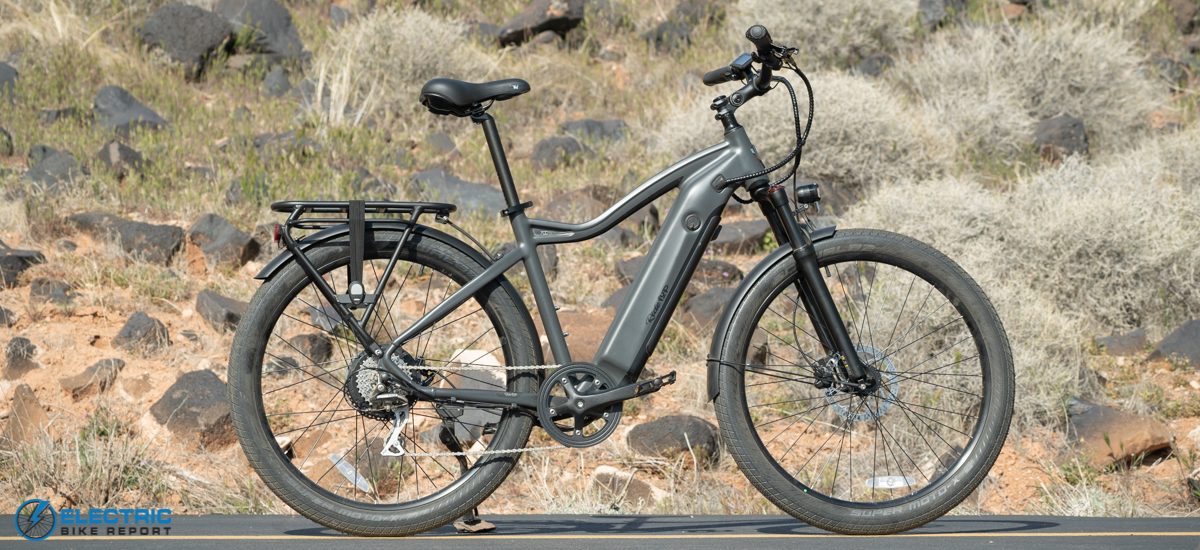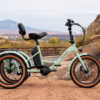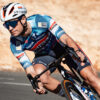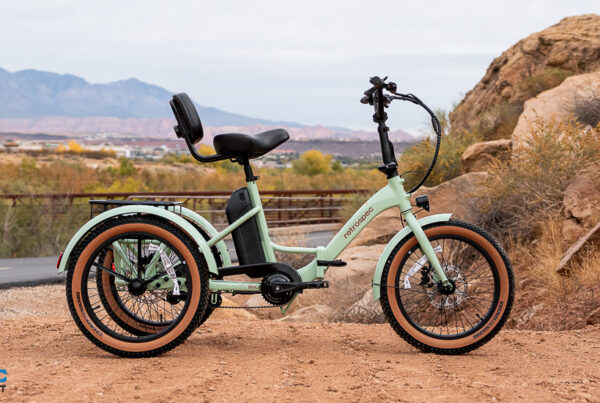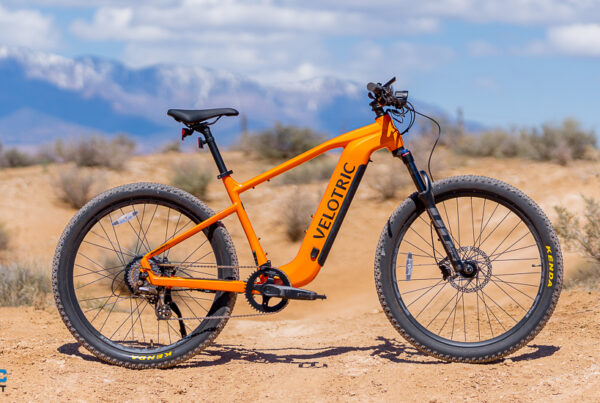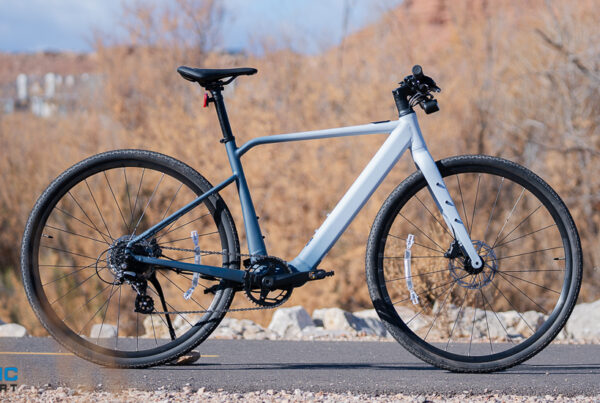While the 700 Series’ strong suit may be its speed on flat ground, steep hill climbing ability is one department where this 750W e-bike left us wanting a little more.
For context, before I dive into why this isn’t the best hill climbing e-bike we’ve tested, let me point out that the 700 Series did not struggle on 90 percent of the hills I encountered in testing. And that’s saying something; Utah, where Electric Bike Report is based, is a very hilly place.
On rolling hills, especially when I was pedaling and not relying entirely on motor power alone, the bike fared fine uphill. Where it struggled was while throttling up prolonged steep hills.
Hills like our official test hill, Hell Hole.
Hell Hole is a one-third mile long section of bike path that pitches, on average, above 12 percent as it climbs from the bottom of a sandstone canyon to the top. We did two timed laps up Hell Hole on the 700 Series; the first using just the throttle and the second in PAS 5.
In PAS 5, the bike cleared the top in a respectable (but not record-breaking) time of 1:32.00 with an average speed of 11.8 mph. That time lags behind other Class 3 e-bikes we’ve tested by a handful of seconds, but it’s still respectable.
In the throttle only test, though, the 700 Series did not make it to the top.
Hell Hole has gotten the best of many e-bikes we’ve reviewed, so it’s not a terrible surprise when we have a bike peter out part way up the hill. But what’s notable about this result is that most of our hill climb failures happen with 500W e-bikes, not their more powerful 750W siblings.
I chalk this up to the Shengyi motor’s relatively low 60Nm torque rating compared to other 750W motor’s we’ve reviewed. The Aventon Aventure’s 750W motorfor example, makes 80Nm of torque, which is a really important factor when considering hill climbing ability.
Source link

